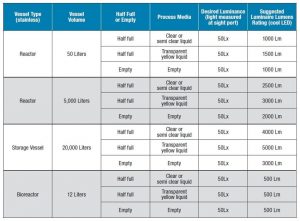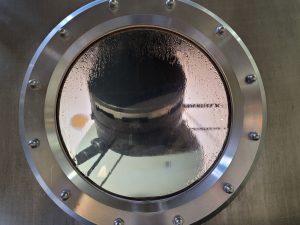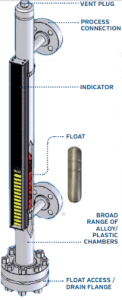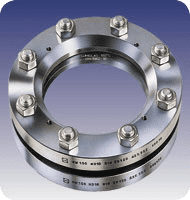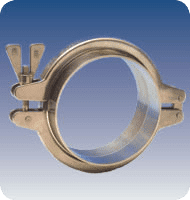How to Size a Sight Glass Light for a Process Vessel
Posted by LJ StarHow to Size a Sight Glass Light for a Process Vessel?
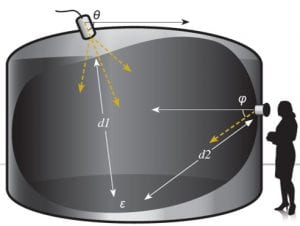
Ah, the world of lighting used to be so simple. When you needed to illuminate the interior of a process vessel or tank, you selected a halogen light by its watts. Typically you used a 50 watt light because that’s what the manufacturers commonly offered. If that wasn’t bright enough, then you used a 100 watt light. It got hot, but you didn’t have much choice. The decision for your sight glass light was simple.
Now that LED lights are replacing halogen luminaires, watts have been replaced by lumens. How many lumens are enough, and how many lumens are overkill for an application? To make things more confusing, a wider range choices are available, ranging from 300 to 3000 lumens, including lights that are way brighter than any lights you have used before, unless you used to be a lighthouse keeper.
The Science of Sight Glass Light Options
This is where science comes in. Well, sort of. There are complicated equations between a light source (lumens) shining into a process vessel and the light that reaches the operator standing at the sight glass window (lux). It has to do with the size of the vessel, the reflectivity of the vessel walls, the color temperature of the LED, the color and opacity of the process media, the angle of the light, and whether the vessel is full, half full or empty. That’s the science part. You can do the equations yourself (see our Light Measurement White Paper), but in the end you still have an operator standing at a sight glass window, and he/she can either see well or not.
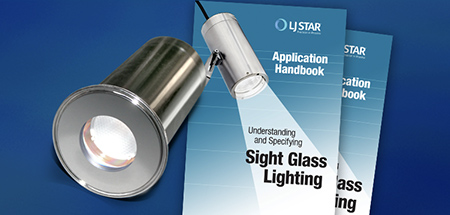
You would think that the lighting manufacturers could give you some common-sense rules of thumb. You know… a tank this big gets this size light. That kind of thing. Actually, until now this kind of guidance simply didn’t exist.
L.J. Star worked with a certified process engineer and an MIT grad to develop guidelines that you can use to size lighting for your application. You can put aside the equations and physics of light, and follow the handy LED light sizing guide below. Hope this is helpful.
If you want to geek out on the science behind it, then download our Light Measurement White Paper. Also, if your application is special, feel free to consult an expert at L.J. Star by email or phone.
